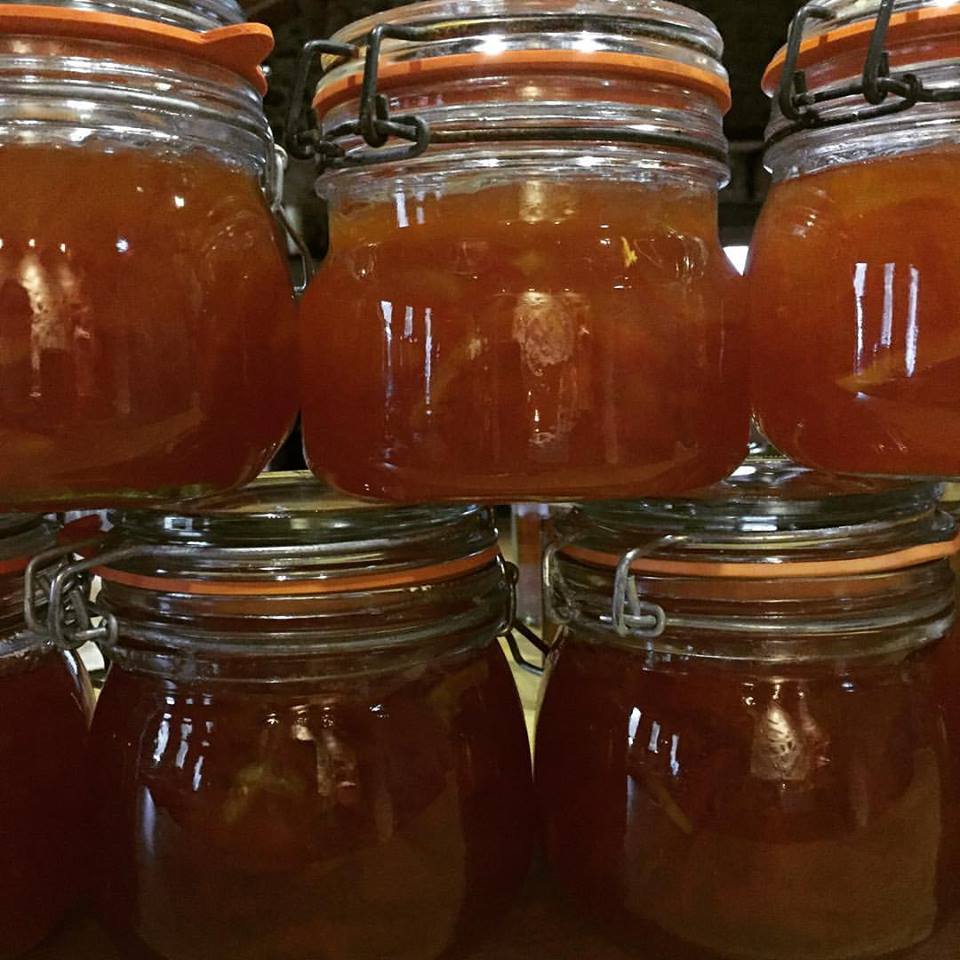In January or February you will be able to buy ugly bitter Seville oranges that make the most exquisite marmalade from any good farm shop. Marmalade could not be simpler, I know people get worried about the setting point and so on but really when you know a couple of the secrets its the simplest thing!
So here you go…
TRADITIONAL SEVILLE ORANGE MARMALADE
2lbs (900g) Seville Oranges
1 Lemon
4lbs (1.8kgs) granulated sugar (makes 12 x 190ml jars)
Put 4 pints (2.25 litres) water into a preserving pan, cut the lemon and oranges in half and squeeze the juice out of them. Add the juice to the water and place the pips and any bits of pith that cling to the squeezer on the square of muslin, cut the orange peel into thin shreds.
Tie the pips and pith up loosely in the muslin to form a little bag, and tie this on to the handle of the pan so that the bag is suspended in the water. Then bring the pan up to simmering point and simmer gently, uncovered, for 2 hours or thereabouts until the peel is completely soft (test a piece carefully by pressing it between your finger and thumb). Meanwhile, chill the saucers in the freezer compartment of the fridge.
Take the muslin bag out to cool, then pour the sugar into the pan and stir it now and then over a low heat, until all the crystals have dissolved (check this carefully, it’s important). Now increase the heat to very high and squeeze the bag of pips over the pan to extract all of the sticky, jelly-like substance that contains the pectin. As you squeeze you’ll see it ooze out. You can do this by placing the bag between two saucers or using your hands.
As soon as the mixture reaches a really fast boil, start timing. Then after 15 minutes spoon a little of the marmalade on to one of the cold saucers from the fridge, and let it cool back in the fridge for a couple of minutes. You can tell – when it has cooled – if you have a ‘set’ by pushing the mixture with your little finger: if it has a really crinkly skin, it is set. If not, continue to boil the marmalade and give it the same test at about 10-minute intervals until it does set.
After that remove the pan from the heat (if there’s a lot of scum, most of it can be dispersed by stirring in half a teaspoon of butter and the rest can be spooned off). Leave the marmalade to settle for 20 minutes. In the meantime, the jars should be washed, dried and heated in a moderate oven for 5 minutes. Pour the marmalade, with the aid of a funnel or a ladle, into the jars, cover with waxed discs and seal while still hot. Label when cold and store in a dry, cool, dark place.


I have given up looking for muslin in January and now tip the pips and pith into a small saucepan, top up with water and let it simmer along side the main pan. I strain this into the peel and sugar mixture after I am sure the sugar has dissolved and then follow your method. I do have a thermometer, but that final critical moment seems easier to monitor with the cold saucers and a dripping wooden spoon at eye level.
Are the oranges getting less ugly to look at? I am sure they had more character when I was young.
I buy cheese muslin by the metre, then just wash well before use. I have to say most of what I have is reused time and time again 🙂